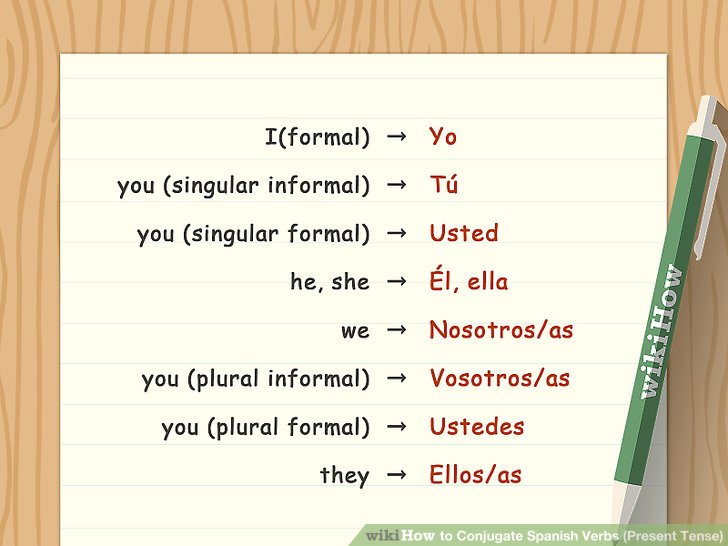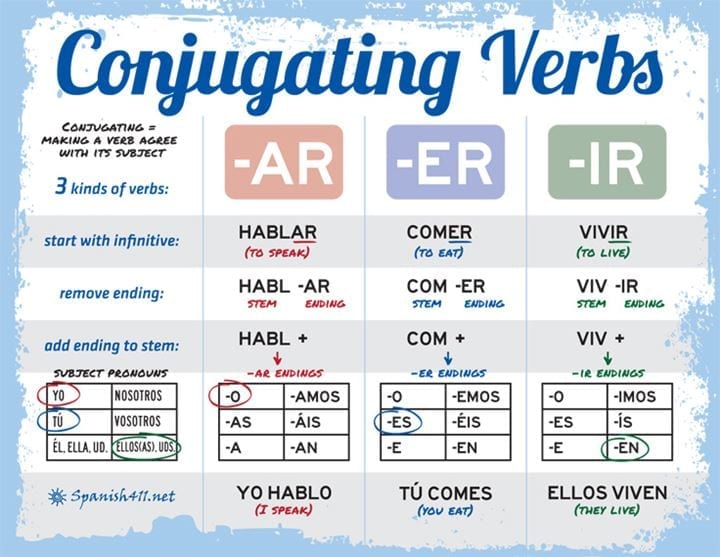Click to see all conjugation charts of parecer in every tense
In this conjugation lesson we are going to learn how to inflect the verb parecer in the Presente tense of the Indicativo mood. It means we will see step by step how to create and translate forms of each grammatical person.
This lesson is specifically about the parecer conjugation. For a general overview of Simple Tenses conjugation see our Simple Tenses Conjugation Chart.
You may also see this Video Presentation on how to conjugate verbs in Presente. It’s embedded below, but using the above link you can see additional information on conjugation in this tense and explanation of special cases and exceptions.
How to translate Presente to English
Note that the phrases in English provided below next to each conjugation are not direct translations from Spanish to English. They are usually the closest general equivalents. The example differences are:- In Spanish conjugation, there is the form usted in the third person singular. But this person does not translate to the English third person singular. It translates to the so called formal you and uses the inflected form which is most often represented as he/she/it in English conjugation charts.
- Similar situation happens in the third person plural, where ustedes translates to the English plural formal you but uses the form which corresponds to the they form in English.
- Tenses are used differently in Spanish and English, so the actual translation should always take into account the context and focus on translating the meaning, not just words.
- In both languages each verb may have multiple meanings and not every meaning translates directly to the other language. Here also, the context and focusing on the particular meaning helps to create the most accurate translation.
Note the timeline
The ability to properly locate the intended position on the timeline is an important skill for proper choice of tenses. So pay attention to the timeline in our lessons and visualize it while listening, speaking, reading or writing. After some practice you’ll be able to select the right tense to use much easier.
Step by step instructions
Presente belongs to the simple tenses group, which means that all of its inflected forms are one word long. There are also compound (compuesto) tenses in Spanish language, where each inflected verb form consists of two words.The verb parecer has an almost regular conjugation in the Presente tense of the Indicativo mood. An exception is the first person singular, which has an irregular form. It means the other persons simply follow the general rules for this group (-er) without further spelling corrections or exceptions. The basis for the conjugation in this tense is the stem of the verb, so we need to start by splitting the infinitive into a stem and an ending. It’s easy to do. Just remove two letters from the end of the infinitive form to get the ending — one of -ar, -er or -ir. What’s left is the stem. So in case of our verb:- the stem is: parec-
- and the ending is: -er
- yo parezco – I seem
The first person singular (yo) uses the -zco ending. It influences other tenses as well. Imperativo Afirmativo & Negativo and Presente Subjuntivo are created based on this person, except for:
- Imperativo Afirmativo tú form, which is regular
- vosotros/vosotras which is always regular in that tense
- yo parezco – I seem
- tú pareces – you seem
- él parece – he seems
- ella parece – she seems
- usted parece – (formal) you seem
- nosotros parecemos – we seem
- nosotras parecemos – (feminine) we seem
- vosotros parecéis – (plural) you seem
- vosotras parecéis – (feminine, plural) you seem
- ellos parecen – they seem
- ellas parecen – (feminine) they seem
- ustedes parecen – (formal, plural) you seem
Hurray! The conjugation is now complete. The final result looks as follows:
| yo | parezco | I seem |
| tú | pareces | you seem |
| él/ella/usted | parece | he/she/it seems |
| nosotros/nosotras | parecemos | we seem |
| vosotros/vosotras | parecéis | you seem |
| ellos/ellas/ustedes | parecen | they seem |
But do not end your session yet – it’s important to repeat and practice the material in order to remember it. Check below for example phrases and next steps.
Example sentences
Todo parece normal, a primera vista, en esa casa de locos.
Everything seems normal, at first glance, in that madhouse.
Me parece que Ángela está cometiendo un gran error.
I think that Ángela is making a big mistake.
Busco y busco pero me parece que nunca voy a encontrar mi destino.
I search and search but it seems to me that I will never find my destiny.
Parece que existimos por una simple casualidad, somos parte de la cadena del destino.
It seems that we exist by mere chance, we are part of the chain of fate.
Parece demasiado bonito para ser verdad.
It seems to good to be true.
Next Steps to Perfection
|
Report a mistake | Give feedback
Thank you very much for making the effort to contact us!
We strive to provide the highest quality content and we greatly appreciate even the smallest suggestions:
We strive to provide the highest quality content and we greatly appreciate even the smallest suggestions:



